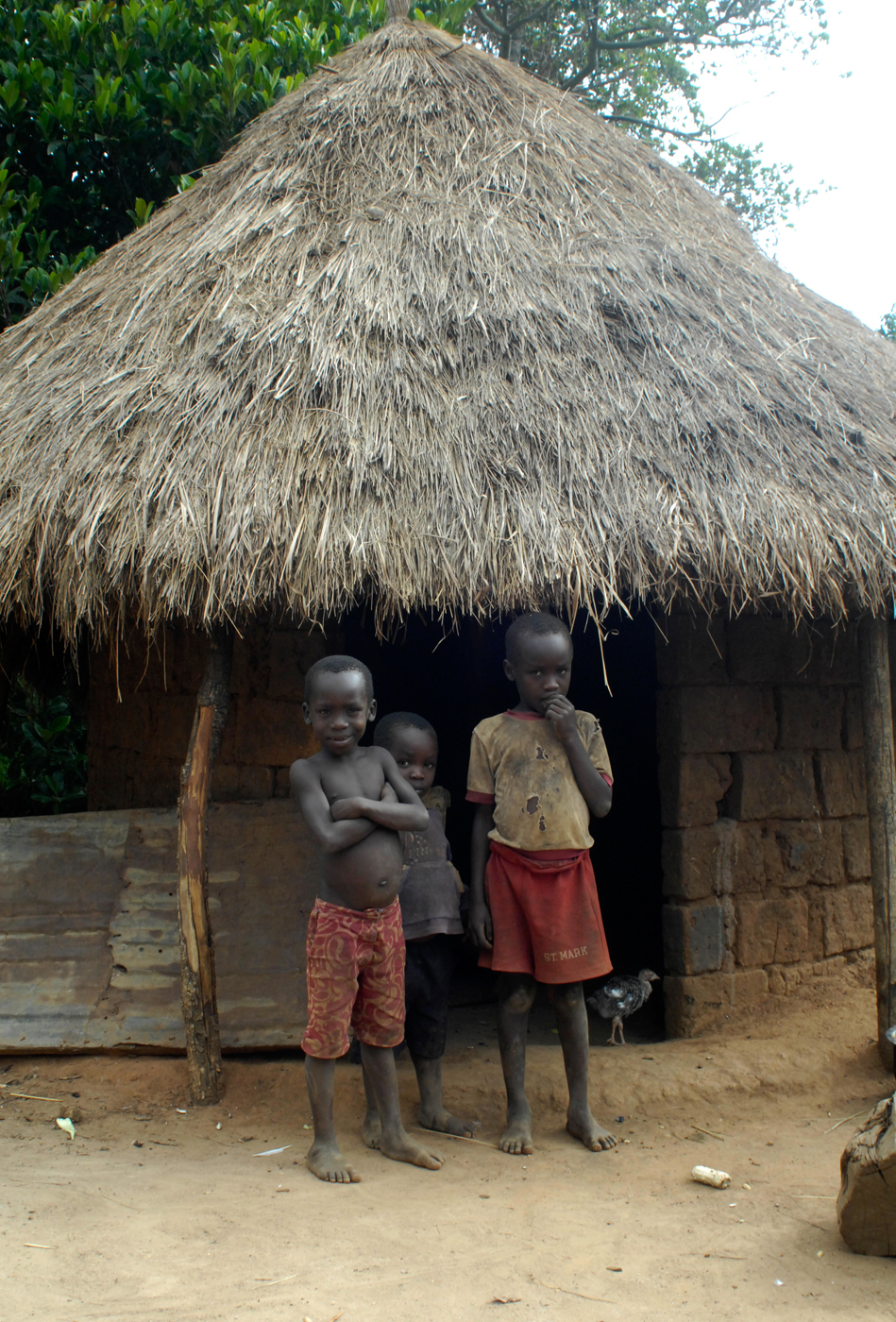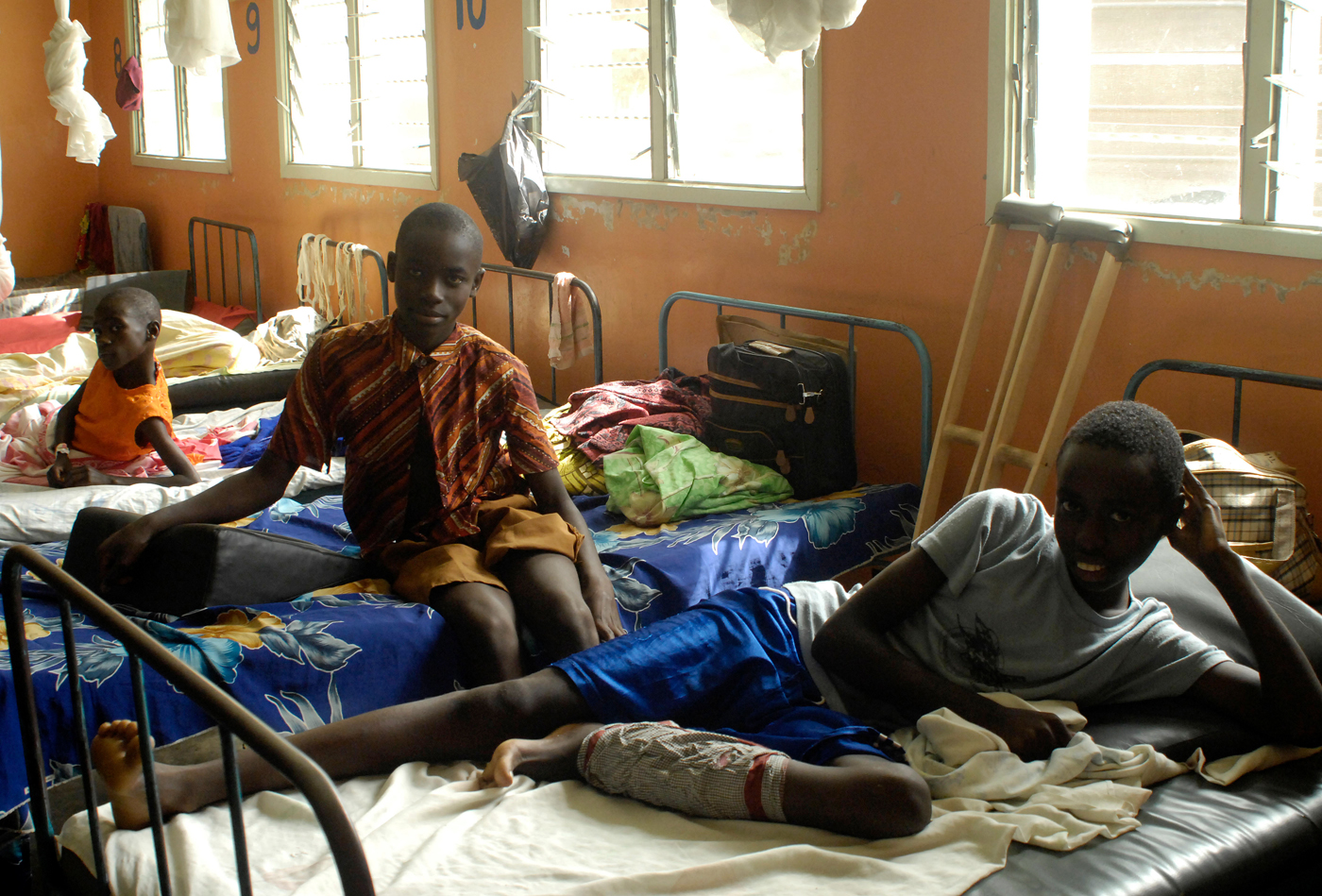Kumi is in the eastern part of Uganda. Like most of the east and northern part of Uganda it is an area that suffers from extreme poverty. Most of the patients are what Ugandans term 'peasants', as in they live off the land with no form of income other than selling off a goat or a cow. The average family size is 12 with most parents struggling to pay for as many school fees as possible. With the less fortunate the children stay at home and work on the land. Unfortunately 40% of the hospital's income is from patients' fees, therefore the cost of the operations and medical treatments are often absorbed by the hospital due to the patients' inability to pay.
The Government only provide 14% of the income of the hospital

The Hospital was founded by the Church Missionary Society in 1929 as a leprosarium in response to the need for specialised work among leprosy patients. For many leprosy sufferers then, Kumi Leprosy Centre became the only place where they could live in community without being rejected, despised and discriminated against. Leprosy had a high social stigma as it was a very deforming disease with no hope of a cure. It was not until 1983 that the cure for leprosy was found. Over the years the Leprosy centre provided much noted care, treatment and rehabilitation for Leprosy sufferers. Many of the leprosy patients still live in the hospital today, as it is difficult to re-integrate them into the community; they consider Kumi Hospital to be their home.
Many of the leprosy patients still live in the hospital today

The years 1985-1992 were years of conflict which engulfed the region. The hospital suffered total collapse both in infrastructure and services, due to the raids from both the rebels and the Ugandan Army. Most of the staff and many locals lived inside the hospital grounds, where there was more security, to try and escape the violent attacks in the villages. By the end of the war in 1992, the hospital lay in a sorry state, vandalised and turned into a camp for internally displaced persons. The water-carrying infrastructure was also vandalised. The farm that was attached to the hospital was looted of over 1000 heads of cattle. Up until this time it had been their main source of income.
By the end of the war in 1992, the hospital lay in a sorry state, vandalised and turned into a camp for internally displaced persons
In 1997 the hospital was transformed into a General Hospital. Since then it has undergone major structural development and upgrading of facilities and infrastructure, mainly from the help of various Non Governmental Organisations (NGO's). The Hospital has now grown to 350-bed capacity, providing a wide range of integrated services including medical, surgical, rehabilitive, primary health care, community based rehabilitation (CBR) programmes and other specialised services such as AMREF Flying Doctor service for VVF repairs and reconstructive surgery. The Hospital also maintains a referral status for leprosy and TB in Eastern Uganda.
The Hospital has now grown to 350-bed capacity, providing a wide range of integrated services
Until recently Kumi Hospital was the only hospital in Eastern Uganda to have an orthopaedic surgeon, and was therefore a referral hospital for all the local government hospitals for orthopaedic surgery and management. This has taken up a large amount of the hospital theatre's time and facilities, as well as space on the only surgical ward.
Because of lack of Government funding the hospital has always had to rely on charitable organsiations for up to 50% of its income. In recent years several large sponsors have reduced their funding in order to support projects elsewhere. This has left the hospital facing rising costs which it cannot pay.
The Charity 'Friends of Kumi Hospital' was started by Frances Semakula (current chairperson) after doing six months voluntary work at the hospital in 2007. After observing and discussing with the staff and patients the problems that the hospital faced, it became clear that long term action was required to try and address some of the issues. On returning to the UK she set about putting together a board of trustees to create a charity that aimed to provide external support to the whole hospital in it's development and aim to become 'A Place of Excellence in Rehabilitation Medicine and Disability Care'.
© 2012 friendsofkumihospital.org
Registered Charity No: 1126962